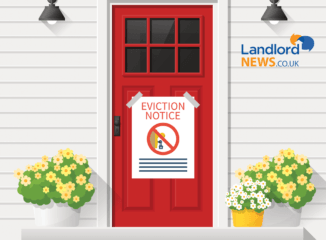Ministers still failing to tackle rent debt crisis, says NRLA
One year on from when the first eviction ban was introduced for rented homes in the UK, research from the National Residential Landlords Association (NRLA) shows more tenants are now likely to lose their homes as a result.
This information shows that there are an estimated 840,000 private tenants who have built rent arrears since lockdown measures began. With no action possible against them, the NRLA points out that these debts are increasing to the point where there is no hope of many being able to afford to pay them back.
The association says the outcome will be that most will have to leave their homes as emergency measures taper down from June, and that damage such debts could have on credit scores will cause tenants difficulties when wanting to move home.
The research shows that 60% of landlords have lost rental income as a result of the pandemic. Of these, 39% said the losses were continuing to increase.
The NRLA highlights that it’s taking an average of a year from a private landlord making a claim to repossess a property to it being enforced. This is despite cases currently considered by the courts being the most serious, including those related to tenant anti-social behaviour and other criminal activity and where rent arrears were building before lockdown measures started last year.
With the Government now working to taper down emergency restrictions in the sector, the NRLA is renewing its call for an urgent financial package to pay off rent debts built as a result of the pandemic. This includes Government guaranteed, interest free hardship loans for the majority of tenants now in arrears but who do not qualify for benefit support. Grants should be made available for those in receipt of benefits.
It is calling also on the courts to make much better use of technology to ensure that legitimate possession cases can be heard more swiftly. This could make it easier for tenants to attend hearings by video, which currently very few do in person. It should be matched by ensuring they can access legal advice and support much earlier in the process than at present.
Ben Beadle, Chief Executive of the NRLA, said: “Whilst many landlords and tenants have worked well in responding to the challenges posed by the pandemic, we are now at a crunch point. As the country follows the roadmap out of lockdown, so too emergency measures in the rental market will need to be eased.
“Ministers need to ensure the tenants have the financial means to pay off rent debts built as a result of the pandemic. Without this they will have to accept the inevitable consequence of rising homelessness and damaged credit scores.”





